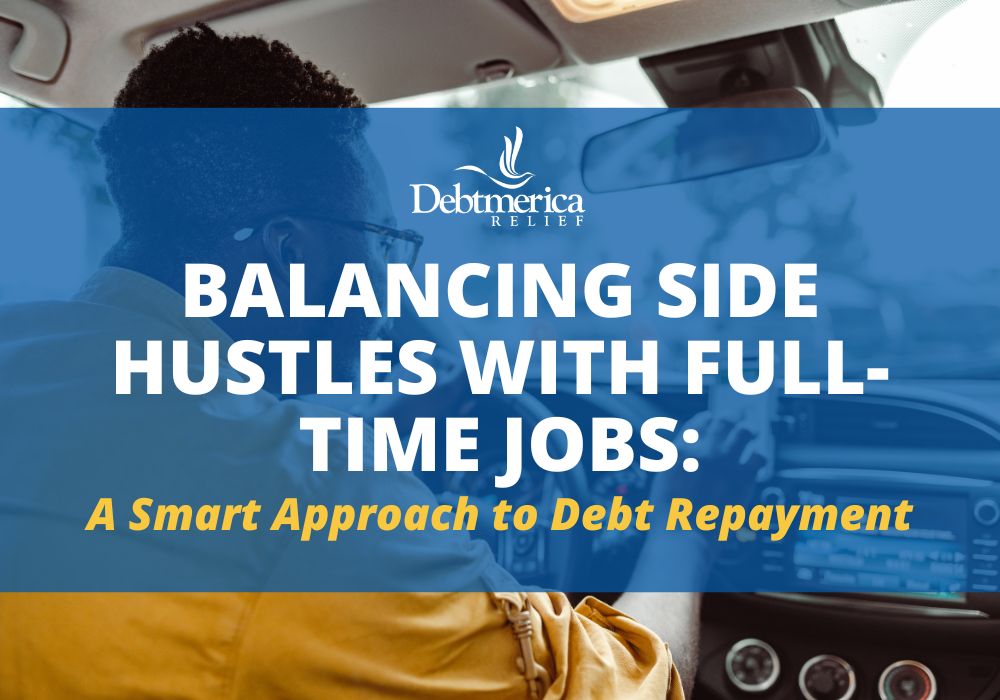Balancing Side Hustles with Full-Time Jobs: A Smart Approach to Debt Repayment

In today’s economy, juggling a full-time job while taking on a side hustle has become increasingly common. For many, it’s not just about extra spending money—it’s a crucial strategy to manage and repay mounting debt. Whether it’s student loans, credit cards, or personal loans, debt often drives people to stretch themselves thin in pursuit of financial freedom. But balancing a side hustle alongside a demanding job isn’t easy, especially when the goal is to aggressively tackle debt without burning out. Here’s how you can make it work.
The Role of Debt in the Side Hustle Boom
Debt has become a significant financial burden for millions, with the average American carrying over $90,000 in combined debt according to recent studies. This weight pushes many to find alternative income streams to ease their monthly obligations and shorten the repayment timeline. Side hustles offer a way to increase income without quitting a steady paycheck.
However, taking on extra work while holding a full-time job can quickly lead to exhaustion and stress if not approached thoughtfully. The key is to strike a balance that keeps you productive without sacrificing your health or primary job performance. Done right, a side hustle can be a powerful debt repayment tool that accelerates your path to financial freedom.
Choosing the Right Side Hustle for Your Debt Goals
Not all side hustles are created equal, especially when your priority is debt repayment. The type of debt you’re dealing with should shape your approach to picking a side gig. If you have high-interest credit card debt, the goal might be to generate quick, consistent cash flow that you can funnel directly toward your balances. Gig economy jobs like driving for Uber, delivering for DoorDash, or freelancing on TaskRabbit can offer flexible hours and fast paychecks. These options might be less lucrative per hour but provide immediate cash for urgent debt needs.
For longer-term debts such as student loans, where your payoff horizon spans years, consider side hustles that build skills or generate passive income. Freelance writing, graphic design, tutoring, or selling digital products online might require more setup but can scale over time, increasing your earning potential beyond what gig work typically offers. It’s important to realistically evaluate how much time you can dedicate without sacrificing your full-time job or personal well-being. Look for side hustles that fit your schedule and energy levels and align with your financial goals.
Time Management Strategies for Working Professionals
Balancing two jobs can feel overwhelming without clear boundaries and systems. Effective time management is crucial to prevent burnout and maintain steady progress on debt repayment. Start by mapping out your weekly schedule and blocking dedicated time for your side hustle. This could be weekday evenings, early mornings, or weekends—whatever works best for you. Use digital calendars or apps to stay organized and committed.
Set non-negotiables like 7-8 hours of sleep and time for family or relaxation. Protecting your mental and physical health will sustain your productivity in the long run. Batching similar tasks can also save time. For example, designate one evening for social media marketing if you run an online business, or set aside a few hours to complete several freelance assignments. Automating repetitive tasks—like invoicing or client follow-ups—can reduce your workload too. Remember, consistency beats intensity. It’s better to dedicate a small, manageable number of hours regularly than to cram irregular marathon sessions that leave you drained.
Tracking Progress Toward Debt Repayment
One of the biggest motivators to keep hustling is seeing your debt shrink over time. Set clear financial goals—whether it’s paying off a credit card by a certain date or reducing your student loan balance by a fixed amount each month. Track all side hustle income separately from your main job earnings. Keep an eye on how much of that extra money you’re putting toward debt versus spending on expenses or reinvesting in your side business. Using simple spreadsheets or apps like Mint, YNAB, or even a dedicated debt tracker can help visualize your progress. Celebrate milestones, no matter how small, to maintain momentum and stay motivated.
When to Scale Back or Shift Gears
Side hustles can be seasonal or fluctuate in profitability. Sometimes, the added workload might start to impact your full-time job or personal life negatively. Knowing when to step back is just as important as knowing when to push forward. If you’re feeling chronically fatigued, stressed, or neglecting important relationships, it may be time to reassess your hustle. You might pause the side gig after hitting a debt milestone or switch to a less time-intensive option. Think of side hustling in “seasons”—periods of more intense effort followed by times of rest or slower growth. This mindset helps prevent burnout and keeps your hustle sustainable.
A Realistic Example
Sarah, a 28-year-old marketing coordinator, carried $20,000 in credit card debt from unexpected medical bills. She worked full-time Monday through Friday but committed to driving for a ride-share company two evenings a week and Sunday afternoons. By dedicating roughly 10 hours weekly to her side hustle, Sarah earned an extra $500–$600 monthly, which she applied almost entirely to her debt. She tracked her payments meticulously and celebrated when she knocked off $5,000 in just six months.
Although there were tough days juggling work, family, and driving late nights, Sarah prioritized rest and used batching techniques, like doing ride-share runs only on specific days. After 18 months, she was debt-free and able to focus more on building a freelance writing side business that offered more flexibility and less physical strain. Her journey shows how strategic planning and realistic expectations can make side hustling a debt repayment game-changer.
Conclusion
The ultimate goal of balancing side hustles with full-time work is to create freedom—both financial and personal. Debt repayment is often the critical first step toward that freedom, and a well-managed side hustle can accelerate your timeline dramatically. Remember why you started and design your hustle around your lifestyle and limits. With thoughtful choices, disciplined time management, and clear goals, you can make the extra effort pay off without losing yourself in the process. If your debt ever feels overwhelming or unmanageable, it’s wise to consult with a qualified debt professional who can help guide you toward the best solutions. Debtmerica Relief has over 18 years of experience in providing relief to our clients whose financial burdens have become too much to handle.
If you need help with debt, contact us for a free consultation.



